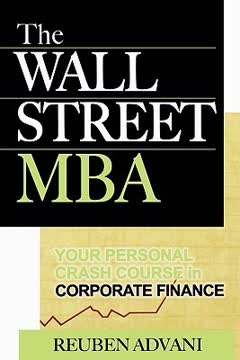Key Takeaways
1. Financial statements are interconnected narratives of a company's health
I like to think of the balance sheet as the doctor's report for a company, because it helps me determine whether a company is in good financial health.
Balance sheet basics. The balance sheet provides a snapshot of a company's assets, liabilities, and equity at a specific point in time. It follows the fundamental equation: Assets = Liabilities + Shareholders' Equity. This statement reveals a company's solvency, liquidity, and capital structure.
Income statement insights. The income statement, often called the profit and loss statement, shows a company's revenues, expenses, and profitability over a period of time. It begins with sales, subtracts various costs and expenses, and ends with net income. Key metrics include:
- Gross margin: (Revenue - Cost of Goods Sold) / Revenue
- Operating margin: Operating Income / Revenue
- Net profit margin: Net Income / Revenue
Cash flow statement importance. This statement reconciles the differences between accrual accounting (used in the income statement) and actual cash movements. It's divided into three sections:
- Cash from operations
- Cash from investing activities
- Cash from financing activities
The cash flow statement is crucial for understanding a company's ability to generate cash, which ultimately determines its long-term viability.
2. Accounting principles can be manipulated, creating opportunities for fraud
Baby, don't forget the numbers.
Creative accounting tactics. Companies may employ various techniques to present their financial statements in a more favorable light:
- Revenue recognition manipulation: Recording sales before they are earned
- Expense deferral: Pushing costs into future periods to inflate current profits
- Off-balance-sheet financing: Hiding liabilities through special purpose entities
- Mark-to-market accounting: Using subjective valuations for illiquid assets
Red flags for fraud. Investors and analysts should be aware of warning signs that may indicate financial manipulation:
- Unusually high growth compared to industry peers
- Consistently meeting or beating analyst expectations
- Complex transactions or organizational structures
- Frequent changes in auditors or accounting policies
- Large discrepancies between reported earnings and cash flow
Enron case study. The Enron scandal exemplifies how creative accounting can lead to catastrophic failure. The company used mark-to-market accounting, off-balance-sheet entities, and revenue manipulation to inflate its reported profits and hide billions in debt. This ultimately led to one of the largest bankruptcies in U.S. history and the dissolution of Arthur Andersen, one of the "Big Five" accounting firms.
3. Valuation is an art, not a science, with multiple approaches
I would go so far as to say that it is far more three-card monte than science.
Discounted Cash Flow (DCF) method. This approach values a company based on its expected future cash flows, discounted to present value. Key steps include:
- Project future cash flows
- Determine the appropriate discount rate (often using WACC)
- Calculate the present value of projected cash flows
- Add a terminal value to account for cash flows beyond the projection period
Comparable company analysis. This method values a company by comparing it to similar public companies using various multiples:
- Price-to-Earnings (P/E) ratio
- Enterprise Value-to-EBITDA (EV/EBITDA) ratio
- Price-to-Book (P/B) ratio
- Price-to-Sales (P/S) ratio
Limitations of valuation models. While these methods provide a framework for valuation, they are subject to numerous assumptions and biases. Factors that can impact valuation include:
- Quality of input data and projections
- Choice of comparable companies
- Market sentiment and macroeconomic conditions
- Company-specific risks and growth potential
4. Cost of capital determines investment decisions and company valuations
Cost of capital is useful in the world of finance for two primary reasons: It serves as an effective performance benchmark. It enables the calculation of present values of future payments—something extremely useful in valuation analysis.
Weighted Average Cost of Capital (WACC). WACC represents the average rate a company must pay to finance its assets, considering both debt and equity:
WACC = (E/V × Re) + (D/V × Rd × (1 - T))
Where:
- E = Market value of equity
- D = Market value of debt
- V = Total market value (E + D)
- Re = Cost of equity
- Rd = Cost of debt
- T = Tax rate
Capital Asset Pricing Model (CAPM). This model is commonly used to calculate the cost of equity:
Re = Rf + β(Rm - Rf)
Where:
- Rf = Risk-free rate
- β = Beta (measure of systematic risk)
- Rm = Expected market return
- (Rm - Rf) = Market risk premium
Importance in decision-making. Cost of capital serves as a hurdle rate for investment decisions. Projects or investments should only be undertaken if their expected return exceeds the company's cost of capital. This ensures that the company is creating value for its shareholders rather than destroying it.
5. Mergers and acquisitions reshape industries but often fail to deliver value
Ultimately, bankers want to see that a deal makes money because they can always extract a fee from it.
Motivations for M&A. Companies pursue mergers and acquisitions for various reasons:
- Economies of scale
- Market expansion
- Vertical integration
- Diversification
- Elimination of competition
- Access to new technologies or talent
Synergy calculation. The potential value creation from a merger is often expressed as synergy:
Synergy = Combined company value - (Acquirer value + Target value)
Common pitfalls. Many M&A deals fail to deliver the expected value due to:
- Overestimation of synergies
- Cultural clashes between merging organizations
- Integration challenges
- Overpayment for the target company
- Regulatory hurdles
- Loss of key employees or customers
AOL-Time Warner case study. This merger, valued at $350 billion in 2000, is often cited as one of the biggest failures in corporate history. Cultural differences, overvaluation of AOL's assets during the dot-com bubble, and failure to achieve expected synergies led to a write-down of nearly $100 billion in goodwill just two years after the merger.
6. Derivatives and complex financial instruments can be double-edged swords
Derivatives were created to hedge against market risk, and today there is an abundance of such instruments.
Types of derivatives. Common derivative instruments include:
- Forwards: Agreements to buy/sell an asset at a future date at a predetermined price
- Futures: Standardized, exchange-traded forwards
- Options: Rights (but not obligations) to buy/sell an asset at a specific price within a set time frame
- Swaps: Agreements to exchange cash flows based on different variables (e.g., interest rates, currencies)
Uses of derivatives. These instruments serve various purposes:
- Hedging: Protecting against adverse price movements
- Speculation: Betting on future price movements
- Arbitrage: Exploiting price discrepancies between markets
Risks of derivatives. While derivatives can be powerful tools for risk management, they can also amplify risks:
- Leverage: Many derivatives allow for significant exposure with minimal upfront investment
- Counterparty risk: The risk that the other party in a contract will default
- Complexity: Difficult-to-understand instruments can lead to unexpected losses
- Systemic risk: Interconnectedness of financial institutions through derivatives can amplify market shocks
Lessons from financial crises. The 2008 financial crisis highlighted the dangers of complex derivatives, particularly credit default swaps (CDS) on mortgage-backed securities. The opacity and interconnectedness of these instruments contributed to the near-collapse of the global financial system.
7. Portfolio theory aims to maximize returns while minimizing risk
Modern portfolio theory is based on the idea that investors expect the lowest possible risk for a target rate of return.
Diversification benefits. By combining assets with low correlation, investors can reduce portfolio risk without sacrificing expected returns. This is the fundamental insight of Modern Portfolio Theory (MPT).
Efficient frontier. This concept represents the set of optimal portfolios that offer the highest expected return for a given level of risk. Key points:
- Portfolios on the efficient frontier are considered optimal
- Investors should choose portfolios along this frontier based on their risk tolerance
- The Capital Asset Pricing Model (CAPM) extends this idea to include a risk-free asset
Risk measures. Portfolio theory employs various metrics to quantify risk:
- Standard deviation: Measures total risk (systematic + unsystematic)
- Beta: Measures systematic risk relative to the market
- Sharpe ratio: Measures risk-adjusted return
Limitations of MPT. While influential, the theory has some drawbacks:
- Assumes normal distribution of returns (which may not hold in reality)
- Based on historical data, which may not predict future performance
- Ignores transaction costs and taxes
- Assumes investors are rational and markets are efficient
8. The business of finance is evolving with technology and new investment vehicles
FinTech, has transformed the way financial service firms conduct transactions, afforded greater access to a broader base of customers, and increased the speed at which information is disseminated.
Rise of FinTech. Financial technology is reshaping traditional finance:
- Blockchain and cryptocurrencies
- Robo-advisors and algorithmic trading
- Peer-to-peer lending platforms
- Mobile payment systems
- Big data analytics for risk assessment
New investment vehicles. Innovation has created new ways for investors to access markets:
- Exchange-Traded Funds (ETFs): Offer low-cost, diversified exposure to various asset classes
- Smart beta strategies: Combine passive and active investing approaches
- Crowdfunding platforms: Allow retail investors to participate in early-stage companies
- Alternative investments: Private equity, venture capital, and hedge funds becoming more accessible
Challenges and opportunities. The evolving landscape presents both risks and rewards:
- Increased accessibility may lead to uninformed investment decisions
- Cybersecurity threats in an increasingly digital financial world
- Regulatory challenges in keeping pace with technological innovation
- Potential for greater market efficiency and lower costs for consumers
- Democratization of finance, allowing broader participation in financial markets
Last updated:
FAQ
What is "The Wall Street MBA: Your Personal Crash Course in Corporate Finance" by Reuben Advani about?
- Comprehensive finance overview: The book provides a crash course in corporate finance, covering essential topics such as accounting, valuation, bonds, stocks, derivatives, mergers and acquisitions, portfolio theory, and the business of finance.
- Accessible and practical: Advani demystifies complex financial concepts, making them accessible to readers at all levels through clear explanations and real-world examples.
- Two-part structure: Part 1 focuses on accounting and financial statements, while Part 2 delves into finance topics like valuation, markets, and risk management.
- Empowering readers: The goal is to equip readers with the knowledge to confidently navigate corporate finance and make informed decisions.
Why should I read "The Wall Street MBA" by Reuben Advani?
- Bridges theory and practice: The book translates complex financial theories into practical knowledge for corporate, investment, and personal finance decisions.
- Broad topic coverage: It spans from basic accounting to advanced subjects like derivatives, arbitrage, and FinTech, providing a solid foundation for understanding the financial world.
- Enhances financial literacy: Readers learn to interpret financial statements, evaluate investments, understand market mechanisms, and recognize risks.
- Applicable for all levels: Whether you’re a student, investor, or business professional, the book offers both foundational knowledge and advanced insights.
What are the key takeaways from "The Wall Street MBA" by Reuben Advani?
- Demystifying finance: The book makes traditionally complex and intimidating finance topics accessible and engaging.
- Real-world application: It emphasizes practical examples, case studies, and actionable advice for real business and investment scenarios.
- Critical analysis skills: Readers gain tools to detect financial fraud, analyze financial statements, and assess company value.
- Empowerment: The book encourages readers to make informed decisions rather than blindly trusting financial experts.
What are the best quotes from "The Wall Street MBA" by Reuben Advani and what do they mean?
- "Finance is not rocket science." This quote underscores the book’s mission to make finance understandable for everyone, not just experts.
- "The true value of a company is what a buyer and seller agree upon." Advani highlights the subjective nature of valuation, emphasizing negotiation and market perception.
- "Money is neither created nor destroyed, but merely transferred from one account to another." This reflects the principle of double-entry accounting, a foundational concept in the book.
- "Fraud is often hidden in the footnotes." Advani stresses the importance of scrutinizing financial statements beyond the surface numbers.
What are the key financial statements explained in "The Wall Street MBA" by Reuben Advani?
- Balance Sheet: Shows a company’s assets, liabilities, and shareholders’ equity at a specific point in time, revealing financial health and capital structure.
- Income Statement: Details revenues, expenses, and profits over a period, highlighting operational performance and profitability.
- Cash Flow Statement: Tracks cash inflows and outflows from operating, investing, and financing activities, providing insight into liquidity and cash management.
How does Reuben Advani explain double-entry accounting in "The Wall Street MBA"?
- Basic principle: Every transaction affects at least two accounts, maintaining the balance in the accounting equation (Assets = Liabilities + Equity).
- Examples provided: Buying inventory decreases cash but increases inventory; borrowing money increases both cash and debt.
- Ensures accuracy: This system forms the foundation for all accounting practices, ensuring financial records are balanced and reliable.
What is the difference between cash and accrual accounting according to "The Wall Street MBA" by Reuben Advani?
- Cash accounting: Records transactions only when cash changes hands, suitable for small service-based businesses.
- Accrual accounting: Records transactions when they occur, regardless of cash flow, providing a more accurate picture of economic activity.
- Implications: Accrual accounting can recognize revenues and expenses before cash is received or paid, which can lead to creative accounting and requires careful analysis.
How does "The Wall Street MBA" by Reuben Advani address financial fraud and manipulation?
- Types of fraud: Discusses money laundering, sales skimming, overstating expenses, bribes, shifting sales/expenses, and off-balance-sheet schemes.
- Case studies: Details the Enron scandal, illustrating how special-purpose entities and revenue manipulation can deceive investors.
- Detection tips: Emphasizes reading footnotes, understanding stock options, pending lawsuits, and off-balance-sheet entities to spot red flags.
What financial ratio analysis methods are covered in "The Wall Street MBA" by Reuben Advani?
- Purpose of ratios: Standardizes financial data to compare companies and assess liquidity, solvency, profitability, and market valuation.
- Categories: Includes activity (inventory turnover), liquidity (current/quick ratios), solvency (debt-to-equity), profitability (gross margin), return (ROE), and market (P/E ratio) analyses.
- Limitations: Ratios should be used alongside broader analysis, as accounting methods and capital structures can affect comparability.
How does "The Wall Street MBA" by Reuben Advani explain company valuation methods?
- Discounted Cash Flow (DCF): Projects future cash flows, discounts them using WACC, and sums present values to estimate company value.
- Comparable Multiple Valuation: Uses industry-average multiples like P/E ratios to benchmark and estimate value quickly.
- Dividend Valuation: Values stocks by discounting expected future dividends, useful for dividend-paying companies.
- Other methods: Includes replacement cost and excess earnings, with the book noting that valuation is as much art as science.
What does "The Wall Street MBA" by Reuben Advani say about bonds and their valuation?
- Types of bonds: Covers corporate, government, zero coupon, fixed-rate, and floating-rate bonds.
- Key features: Explains face value, coupon rate, maturity, and call provisions, and how these affect pricing and yield.
- Valuation factors: Bond prices are influenced by interest rates, inflation, credit risk, and liquidity, with special attention to junk bonds and their risks.
How does "The Wall Street MBA" by Reuben Advani approach portfolio theory and risk management?
- Modern portfolio theory: Focuses on maximizing expected return for a given level of risk, using variance, standard deviation, and the efficient frontier.
- Alpha and beta: Explains how alpha measures performance relative to the market, and beta measures volatility, both crucial for portfolio construction.
- Risk management: Stresses diversification, introduces smart beta strategies, and highlights the importance of managing downside risk.
Review Summary
The Wall Street MBA, Third Edition receives mixed reviews, with an average rating of 3.82/5. Some praise it as an excellent introduction to finance for beginners or a good refresher for professionals. Readers appreciate its humor and clear explanations of basic concepts. However, others criticize it as too basic for those with finance backgrounds, arguing it doesn't live up to its "MBA" title. The book is generally recommended for those new to finance or seeking a quick overview, but may disappoint readers expecting more advanced content.
Similar Books

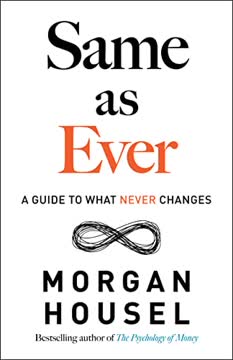
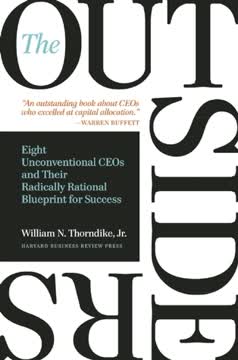
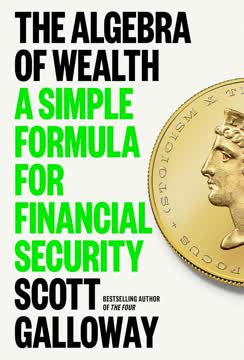
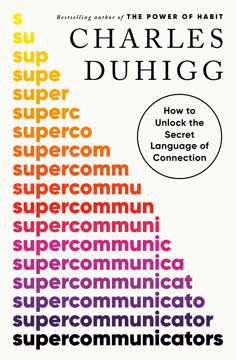



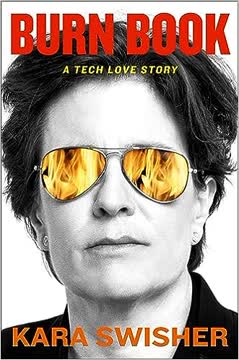
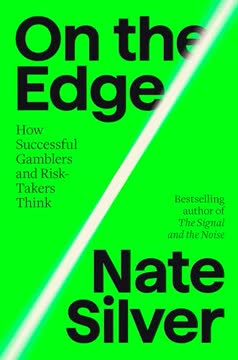
Download PDF
Download EPUB
.epub digital book format is ideal for reading ebooks on phones, tablets, and e-readers.
